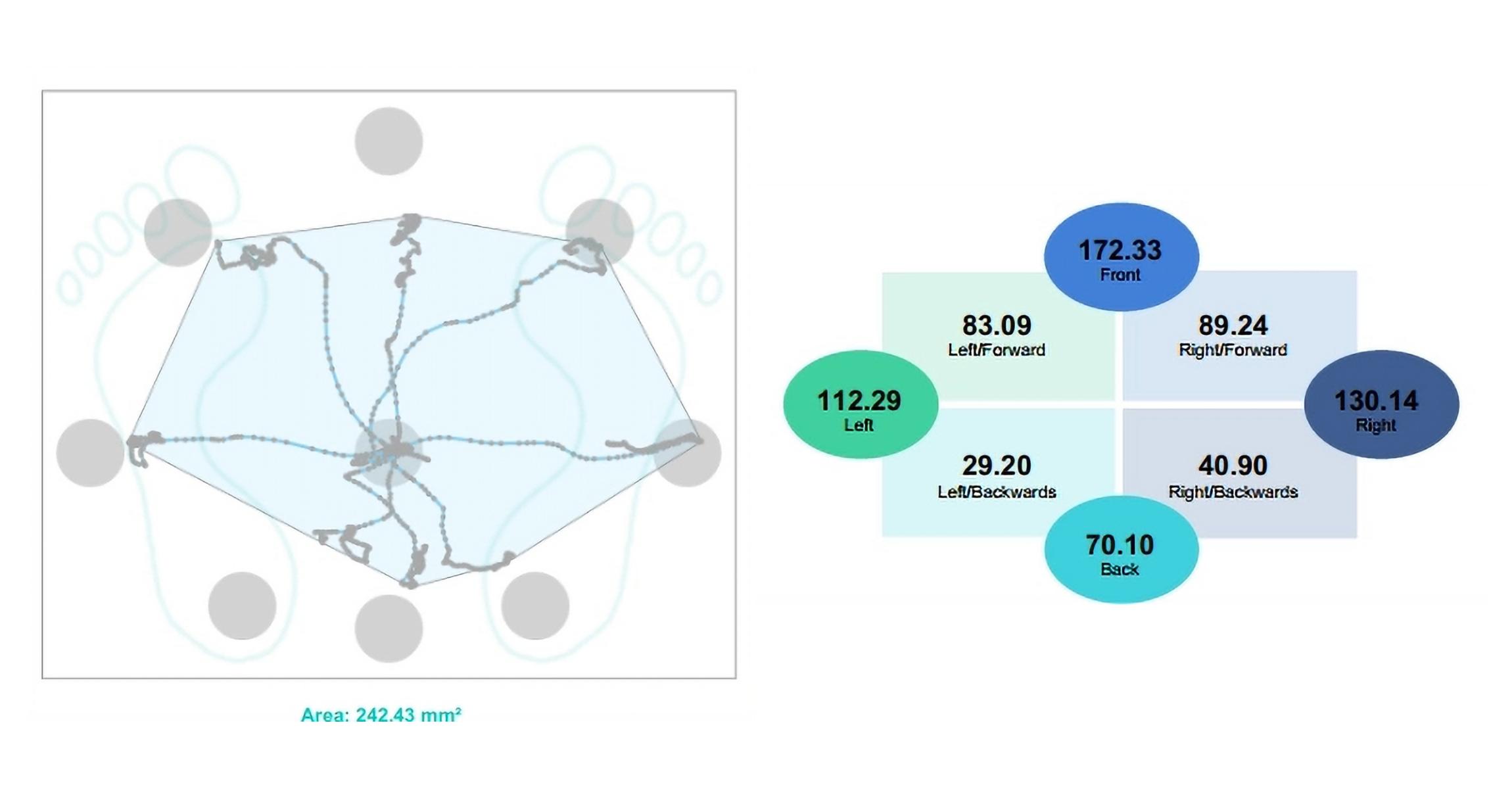Blog

Limits of Stability is a functional and gold-standard test in balance assessment, widely used by clinicians and researchers to evaluate dynamic balance control and fall risk. This method measures how far and how well a person can shift their center of pressure (CoP) within their base of support, critical for maintaining balance during daily activities. It is essential for identifying postural control deficits, predicting fall risks, and tracking patient progress in neurological, vestibular, and orthopedic rehabilitation.
What are the Limits of Stability test?
The Limits of Stability refers to the maximum distance a person can intentionally move their CoP in any direction without stepping or losing balance. This range, often visualized as a “cone of stability,” theoretically includes:
- 6–8° forward
- 8° laterally
- 4.5° backward
How the Limits of Stability Test Works
In the LOS test, the patient is instructed to lean or shift their body in multiple directions—forward, backward, left, and right—without moving their feet. The movement should come from the ankles and trunk, not from stepping.
The Limits of Stability Test evaluates voluntary motor control through controlled leaning tasks in eight directions using a balance platform. The patient moves a visual marker (representing their CoP) toward targets on a screen, holding each position for 8 seconds before returning to center.
This protocol is:
- Height-adjusted for personalized analysis.
- Repeatable across all directions.
- Quantitative, offering objective balance metrics.
What Does LOS Assessment Measure?
Assessing the Limits of Stability provides insights into two key areas:
1. Stability Area and Reach Capacity
- Endpoint Excursion (EPE): Initial reach toward the target (% of theoretical LOS).
- Maximum Excursion (MXE): Farthest point reached during the trial (% of theoretical LOS).
- Area of Stability: Total area of the maximum distances reached in the 8
- directions.

2. Movement Control and Efficiency
- Movement Velocity (MVL): Speed of CoP movement.
- Directional Control (DCL): Accuracy of movement toward the target.
- Reaction Time (RT): Time from signal to movement initiation.
Clinical Applications of the LOS Protocol
The LOS test is widely used in clinical settings, particularly for:
- Vestibular rehabilitation: to assess balance deficits in patients with vertigo or labyrinth disorders
- Stroke (CVA) rehabilitation: to identify asymmetries in weight distribution and postural control
- Parkinson’s disease: to detect reduced movement amplitude and increased fall risk
- Concussion and head trauma: to monitor readiness for return to play or work
- Elderly fall prevention: to evaluate dynamic stability and prevent future falls
Top 5 Reasons for Reduced Limits of Stability
A reduced area of stability and impaired movement control can indicate a balance dysfunction and increased fall risk. Common causes include:
- Cognitive Impairment.
- Musculoskeletal Limitations.
- Sensory Deficits.
- Neurological Conditions.
- Fear of Falling.
Why Use Limits of Stability Test in Clinical Practice?
The Limits of Stability Test is ideal for:
- Objective assessment: LOS provides quantifiable balance data, unlike subjective clinical balance scales
- Early detection: Identifies instability before falls occur, especially in high-risk populations
- Progress tracking: Enables comparison of performance over time through detailed reports and graphs
- Real-time feedback: Enhances motor learning and patient motivation during therapy sessions
- Customized treatment: Allows therapists to tailor rehab programs based on individual stability profiles
Blog
 Back to top
Back to top

 Share
Share
